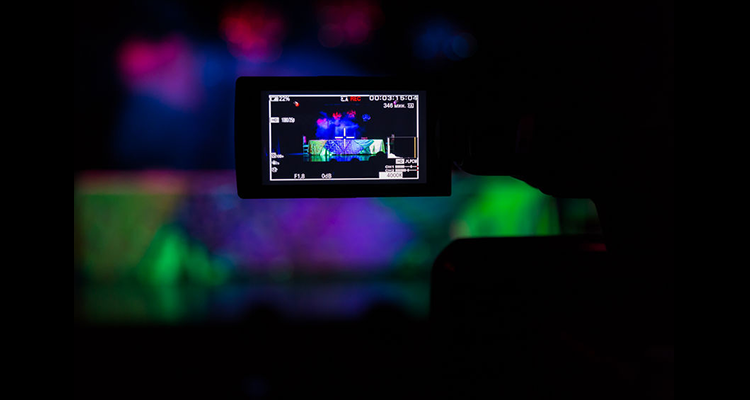The Art of the Killer Demo
 In last month’s Crew Call, I cataloged (from first-hand experience) the many things that we do to shoot ourselves in the foot when we demonstrate technology. Bill Sharer and I have also spent the last two weeks on our podcast, THE WEEK, discussing first what we do wrong and second, how to do it right. You can check our musings out on the rAVe website, or on iTunes.
In last month’s Crew Call, I cataloged (from first-hand experience) the many things that we do to shoot ourselves in the foot when we demonstrate technology. Bill Sharer and I have also spent the last two weeks on our podcast, THE WEEK, discussing first what we do wrong and second, how to do it right. You can check our musings out on the rAVe website, or on iTunes.
Anyhow, last month’s column, “The Jawbone of an Ass,” provoked its fair share of comments, including war stories and thoughtful suggestions, some of which appear in the following. Since we spent last month discussing the ways we do it wrong, let’s spend this month talking about doing it right.
1. Practice, practice, practice.
I’ll admit to the bad habit of reading a manual the night before a demo, and going straight into the event. It’s a bad habit because once in a while, you’re going to find out mid-event that there was a critical step missing from the manual. So there’s just no excuse for not having a dry run, and hopefully in front of somebody who doesn’t know the material and therefore will ask questions similar to those a client will ask. I try to make it a point to have a session with some of my office folks with any new piece of gear before I even offer to demonstrate it to a client, so I’ll have an idea of what the “gotchas” are going to be.
2. Never assume.
The second mistake I try to avoid (even though its against my nature) is to assume that I know the things the client would be interested in seeing. I have been known to prepare extensive demonstrations and presentations that took the client down the wrong road, and opened up an entirely new line of questions and sometimes objections. So the most critical step in avoiding this is to ask a simple question, as suggested by Bill Sharer: “What key items would you like to see in operation, and if the demonstration answers your questions, are you prepared to move ahead?” It’s the fastest way to get your route to the order mapped out, and it helps with the next item on our list:
3. Keep It Simple, Stupid.
KISS is one of the most important principles in our business, and it’s also the one we violate most frequently. We build up a presentation in our minds, and then begin to answer our own questions instead of the client’s. Most of us in the business function well with technical complexity, in fact we seem to gravitate to it, which is why my office has often been known to my colleagues as Rube Goldberg Manor. But for an end user, we need to simplify, producing the effect we are all looking for to close a deal: making it seem simple. The final step in presentation preparation, for me, is to cut out sections that I felt the need to explain but that the client isn’t asking about. As Stephen King points out in his excellent book “On Writing,” you should go through anything you produce being prepared to “kill your darlings.”
4. Hey, Einstein — don’t get carried away.
Experts agree that all it takes to be an expert is to know five percent more about the subject than the person you are talking to. Usually, this margin is just fine for a demo, especially if you understand what the customer wants to see. You know how to demo those items, and the customer stays within the scope of his or her original questions. When any one of these conditions change, your demo is headed for quicksand. It’s tempting to try and accommodate a customer who responds to your presentation, and grows more enthusiastic as the demo progresses. It’s tempting to satisfy your own curiosity when you have such a receptive audience.
But fumbling with the technology will shave your five percent margin down to nada. Never demonstrate something that you don’t actually know. Pulling out a manual during a demonstration to answer customer questions is an awkward moment, and one that will take you down a notch in the eyes of the customer.
5. Don’t fake it, or you may not make it.
Related to the item above, but worse. When you don’t know the answer to a question, say so. Don’t guess. You might get lucky, but then again, your customer might have done his homework this time around. Don’t get creative. Say you’ll get back to them, then do — within 24 hours.
6. Let the customer be hands-on.
You’ve qualified the customer, you’ve read the manual and you’ve rehearsed the demonstration. Set the technology up, observing all safeguards, and let the customer try it out, while you provide guidance. This approach will satisfy the techie customer, and instill trust in the skeptic. You’ll gather some valuable business intelligence, as well. What customers try hands-on may tell you more about the purchase they have in mind than they’ve shared so far. They’ll ask questions about current use and scalability for the future. And they’ll relax — always a plus for a demo.
Are you ready? Well, then, as they said on Lil’ Rascals: “Hey, Kids — let’s put on a show!”





